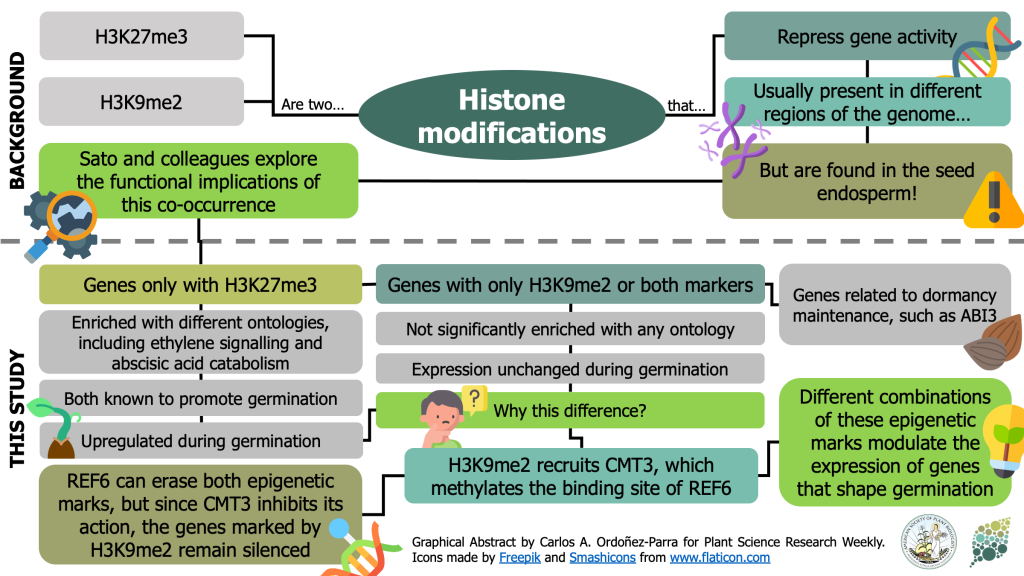
Combinations of maternal-specific repressive epigenetic marks in the endosperm control seed dormancy (bioRxiv.)
Plant Science Research Weekly
H3K27me3 [K27 (Lysine 27) trimethylation on histone H3] and H3K9me2 are two epigenetic modifications that repress gene activity in plants. While they are typically present in different genomic regions, both marks are found in the seed endosperm. Here, Sato and colleagues show that this histone modification…
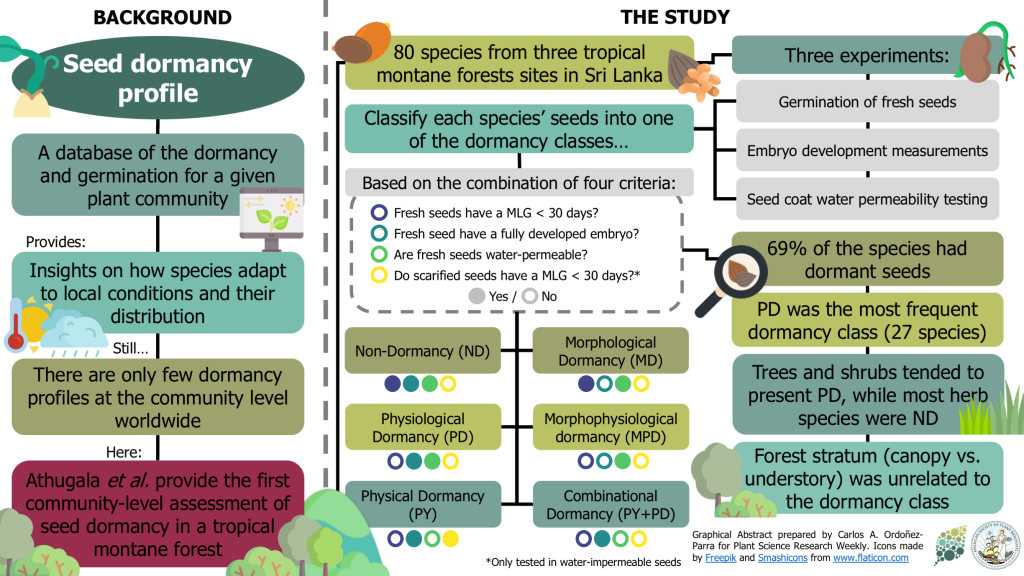
The first dormancy profile for a tropical montane forest community (Plant Biol.) ($)
Plant Science Research Weekly
Seed dormancy is a crucial mechanism to synchronize germination with the most suitable environmental conditions. Therefore, assessing its prevalence at the community level allows us to understand how plants adapt to their local environment. In this paper, Athugala and colleagues build the first dormancy…
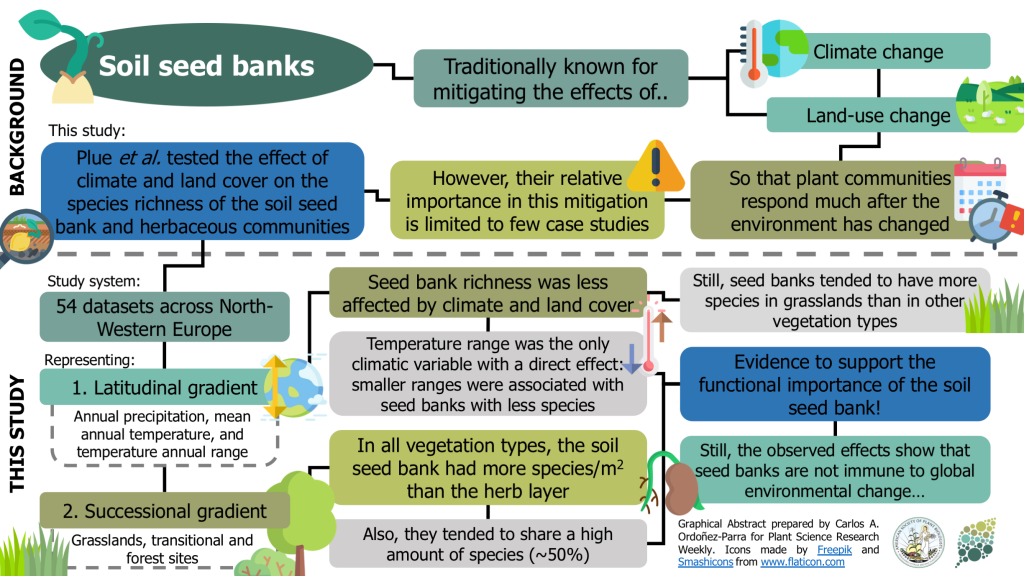
Buffering effects of soil seed banks on plant community composition in response to land use and climate (Glob. Ecol. Biogeogr.)
Plant Science Research Weekly
Plant communities seem to be able to mitigate the effects of climate and land-use change, given their responses are usually observed long after environmental conditions have changed. This lagged response has been attributed to the presence of persistent soil seed banks. Still, the evidence of their…

The genomic and transcriptomic foundations of viviparous seed development in mangroves (bioRxiv)
Plant Science Research WeeklySome mangrove species are viviparous, meaning their seeds germinate while still attached to the mother plant. This behavior is thought to facilitate seedling establishment in the tropical and subtropical intertidal zones they inhabit. However, the genetic and molecular mechanism behind it remains to…
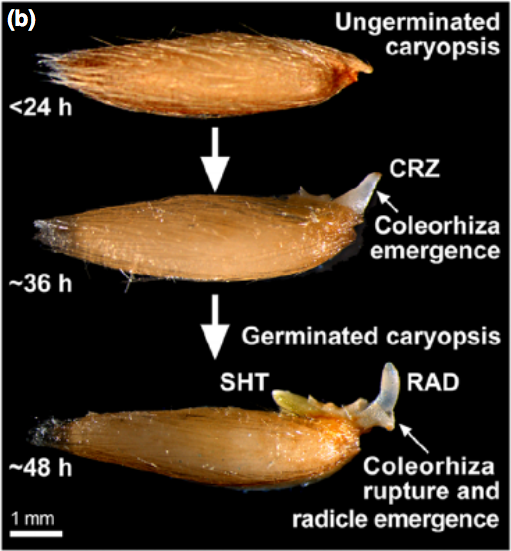
Coleorhiza‐enforced seed dormancy: a novel mechanism to control germination in grasses (New Phytol.)
Plant Science Research WeeklyThe germination process is completed when the radicle emerges from the seed. In eudicots, radicle growth is mechanically limited by the micropylar endosperm. As dormancy is broken and imbibition occurs, this structure is weakened so that radicle can pierce it. In grasses, the radicle is not surrounded…

Burning grasses, poor seeds: Post-fire reproduction of early-flowering Neotropical savanna grasses produces low-quality seeds (Plant Ecol.) ($)
Plant Science Research Weekly
Fire is a disturbance that underpins several ecological processes in tropical savannas. For instance, some plant species from these ecosystems are traditionally known for relying on fires to reproduce. However, this dependency remains to be formally tested. Also, the impact of fire on seed quality…

Seed germination of mudflat species responds differently to prior exposure to hypoxic (flooded) environments (Seed Sci. Res.) ($)
Plant Science Research Weekly
Mudflats species experience rapid changes in their environment due to wetlands' drawdown and refill throughout the year. For instance, species that inhabit these sites deal with contrasting oxygen environments: hypoxic when the water level is high, and aerobic when it recedes. Most studies have aimed…
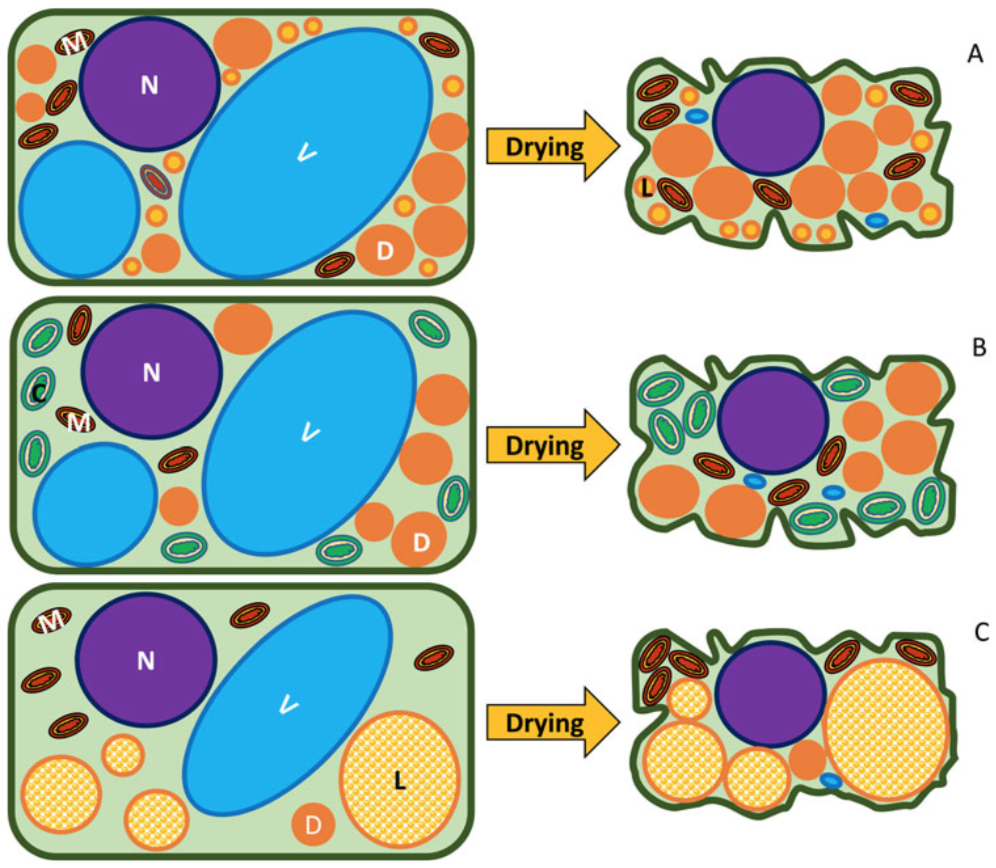
Review: Dry architecture: towards the understanding of the variation of longevity in desiccation- tolerant germplasm ($) (Seed Sci. Res.)
Plant Science Research WeeklyMost seeds, pollen grains, and fern spores are desiccation-tolerant, meaning they remain viable after drying to low water contents. Given this property, they can be stored in cold and dry conditions and potentially remain alive for several years. However, there is increasing evidence that seed longevity…
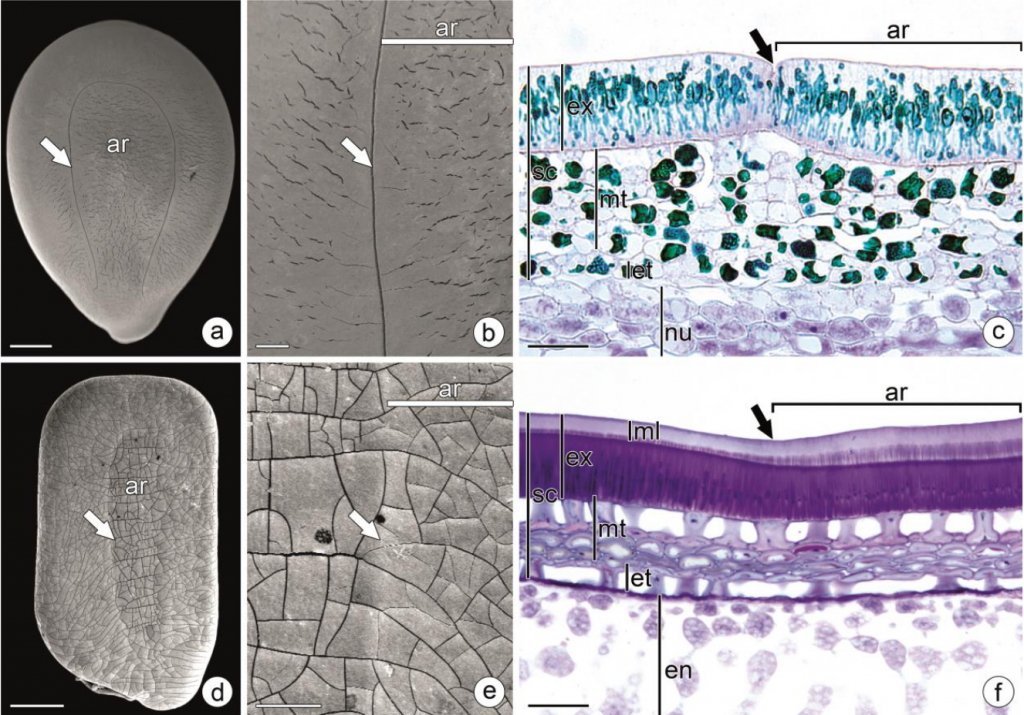
Review: The pleurogram, an under-investigated functional trait in seeds (Ann. Bot.)
Plant Science Research WeeklyThe pleurogram is a depression on both sides of the seeds of some Fabaceae species. Surprisingly, although it is recognized as a specialized structure, little is known about its anatomical features or biological role. In this review, Rodrigues-Junior et al. synthesize the current knowledge about the…

